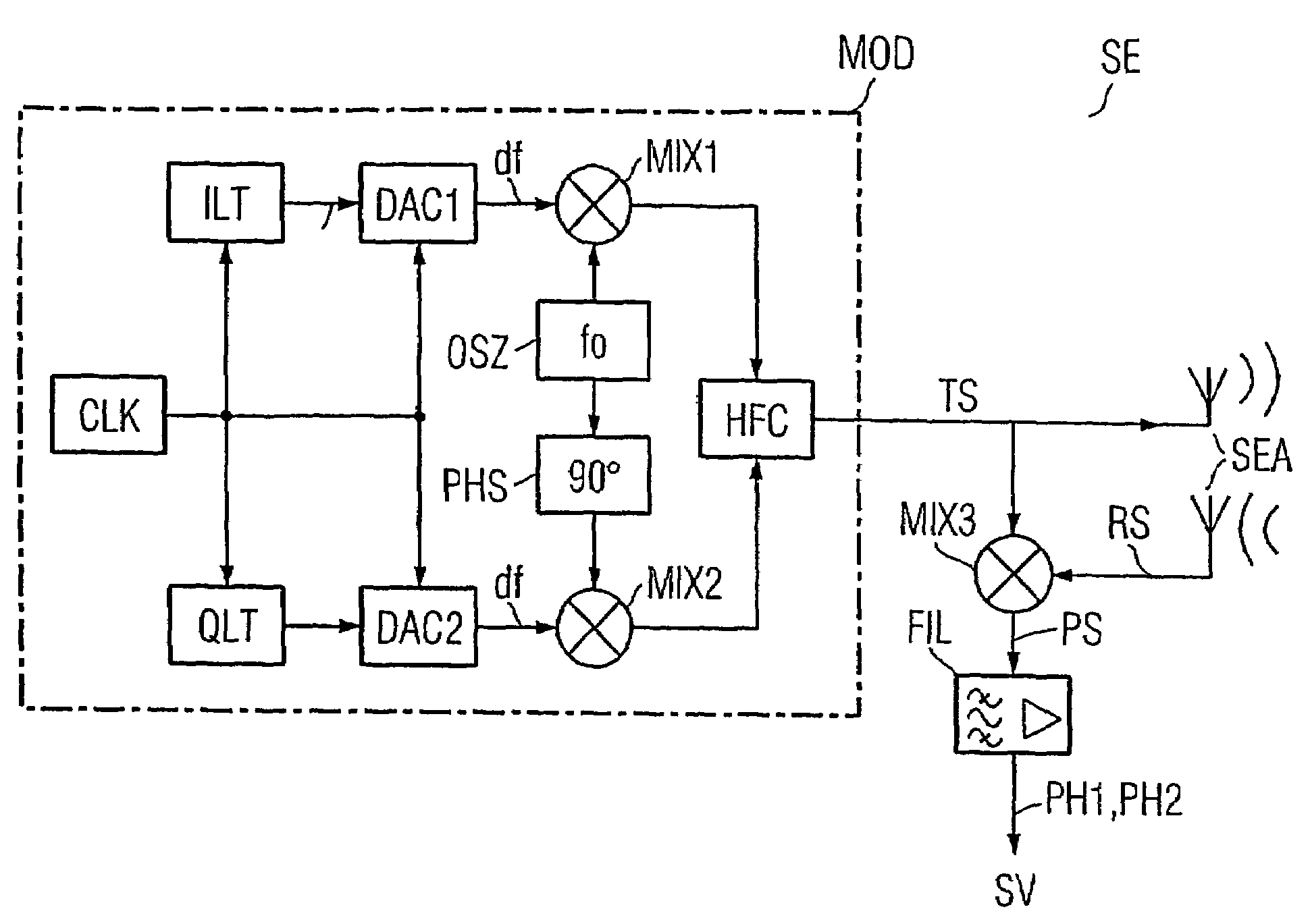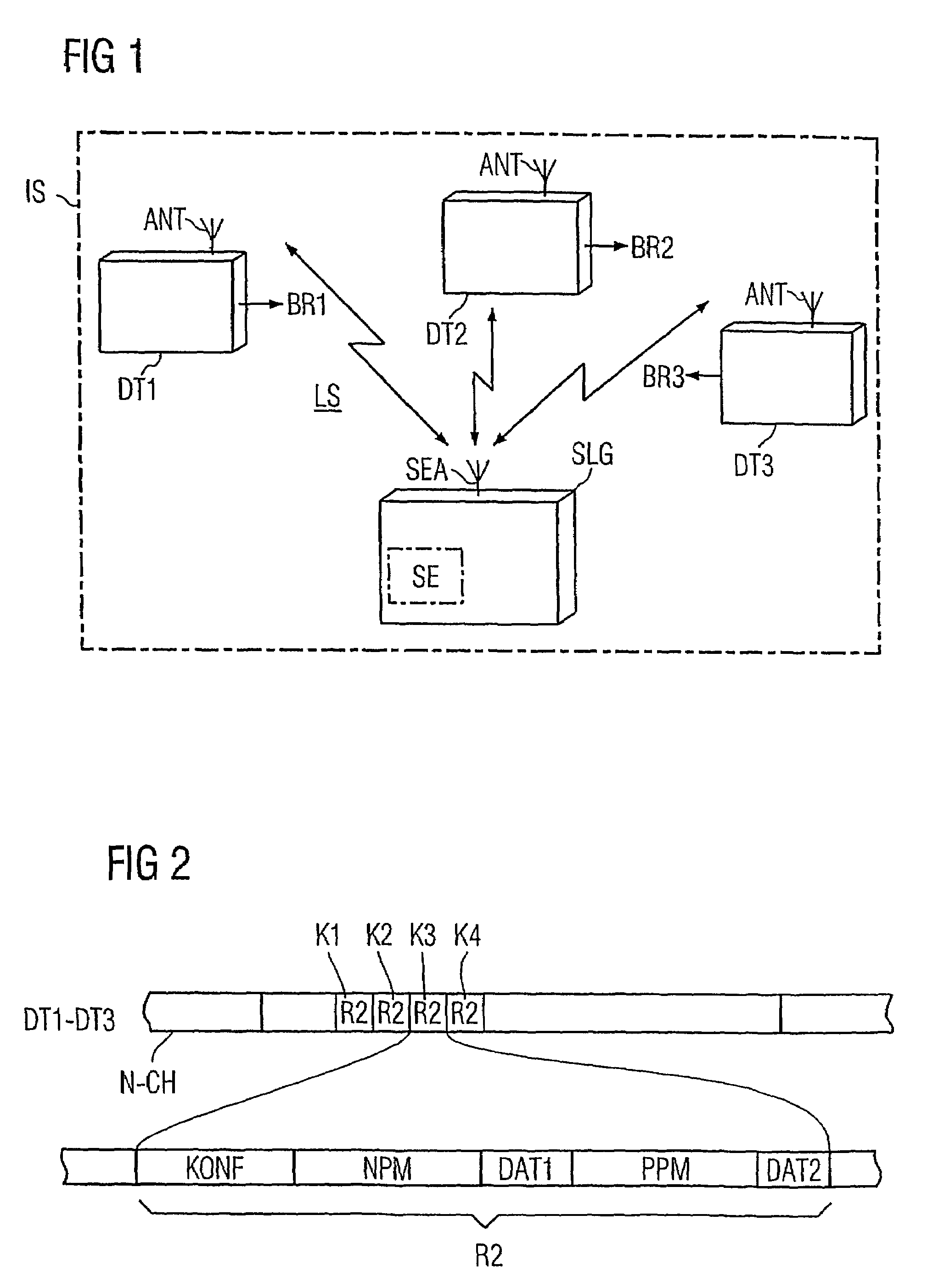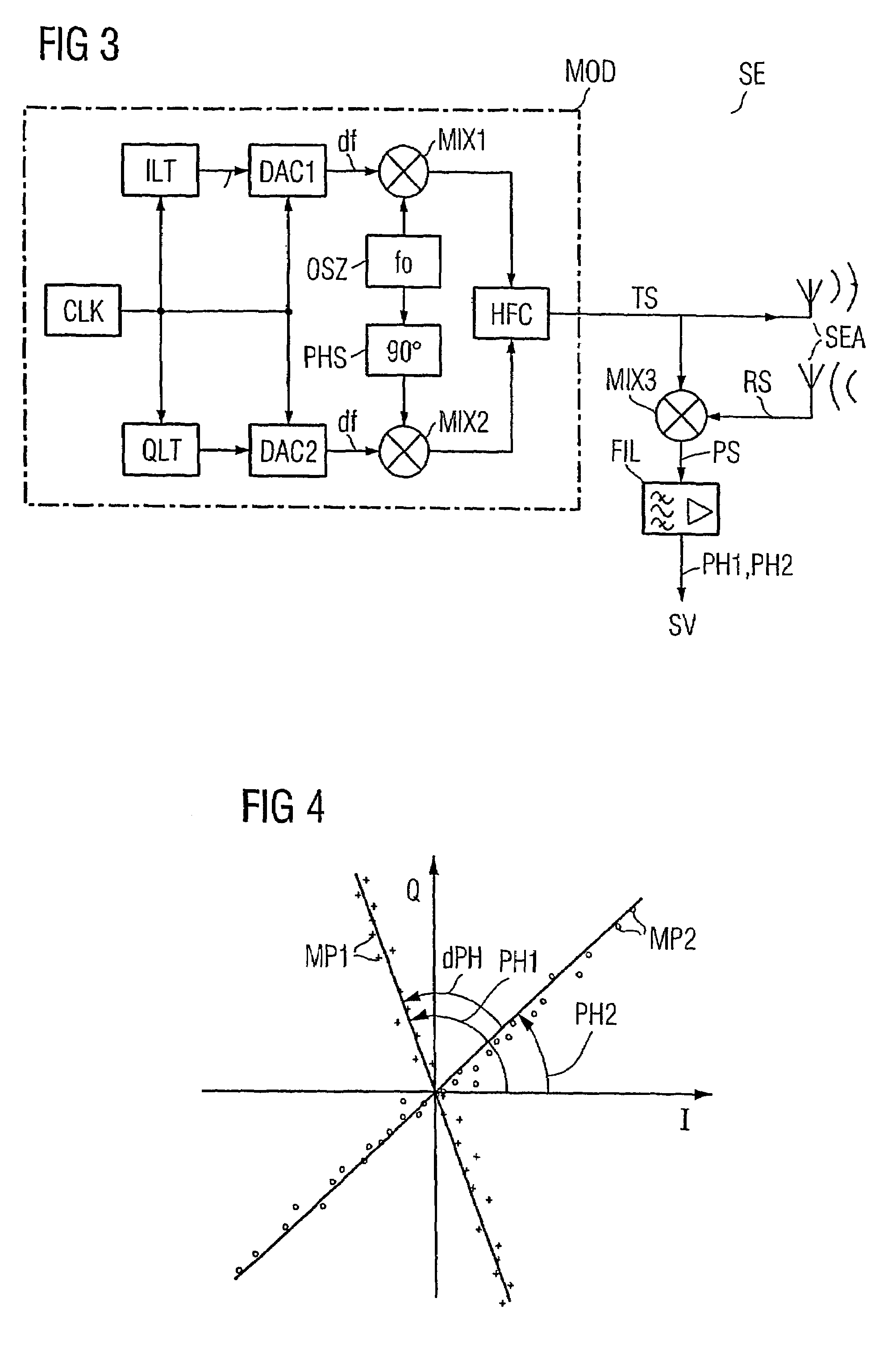Method for determining the distance between a base station and a mobile object, in addition to a base station and identification system for a method of this type
a technology of distance and mobile object, which is applied in the field of distance measurement method, can solve the problems of overshoot between the individual base stations and the corresponding mobile data memories, frequency generation in a conventional manner can be subject to significant measurement inaccuracies, and requires additional complex circuitry, and achieves sufficient accuracy.
- Summary
- Abstract
- Description
- Claims
- Application Information
AI Technical Summary
Benefits of technology
Problems solved by technology
Method used
Image
Examples
Embodiment Construction
[0027]FIG. 1 shows an example of an identification system according to the present invention. The exemplary identification system includes a base station SLG (which can be a read / write device) and a plurality of mobile data memories DT1–DT3. An wireless interface LS is provided between the data memories DT1–DT3 and the base station SLG The mobile data memories DT1–DT3 each move in the direction shown. The different possible movement directions BR1–BR3 of the mobile data memories DT1–DT3 are shown in the figure by way of example.
[0028]The data memories DT1–DT3 and the base station SLG each have an antenna ANT, SEA, respectively for data communication there between. In the base station SLG, the dash-dotted rectangle indicates a transceiver SE, which is used to implement the method according to the invention.
[0029]FIG. 2 shows an exemplary data structure corresponding to a transmission channel N-CH for communication between the mobile data memory DT1–DT3 and the read / write device SLG. ...
PUM
 Login to View More
Login to View More Abstract
Description
Claims
Application Information
 Login to View More
Login to View More - R&D
- Intellectual Property
- Life Sciences
- Materials
- Tech Scout
- Unparalleled Data Quality
- Higher Quality Content
- 60% Fewer Hallucinations
Browse by: Latest US Patents, China's latest patents, Technical Efficacy Thesaurus, Application Domain, Technology Topic, Popular Technical Reports.
© 2025 PatSnap. All rights reserved.Legal|Privacy policy|Modern Slavery Act Transparency Statement|Sitemap|About US| Contact US: help@patsnap.com



